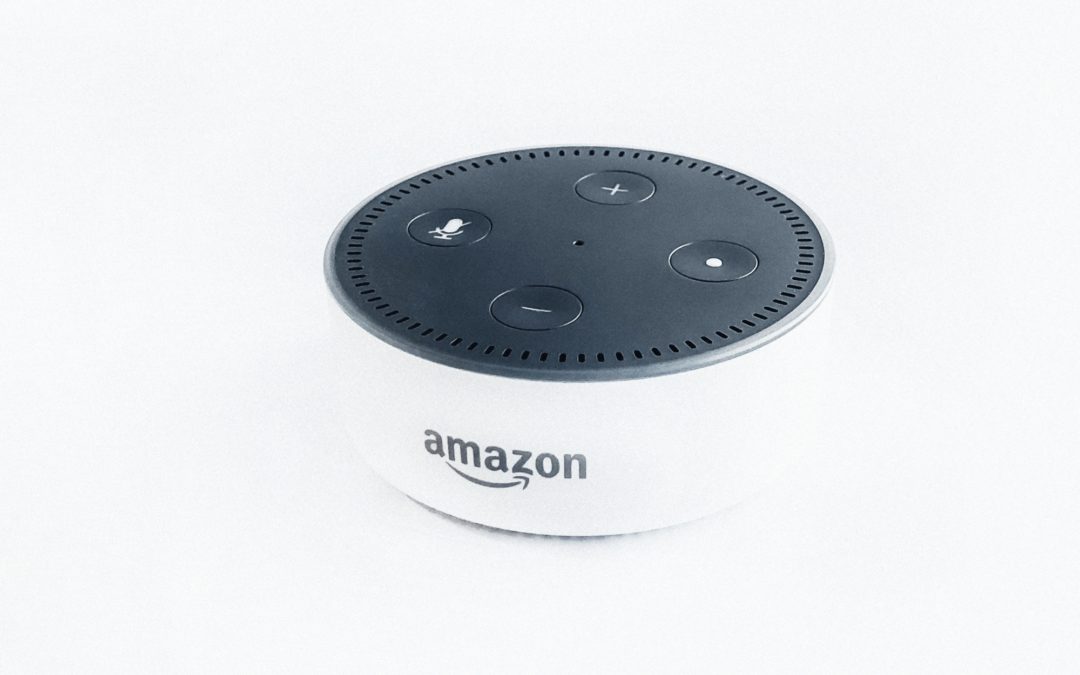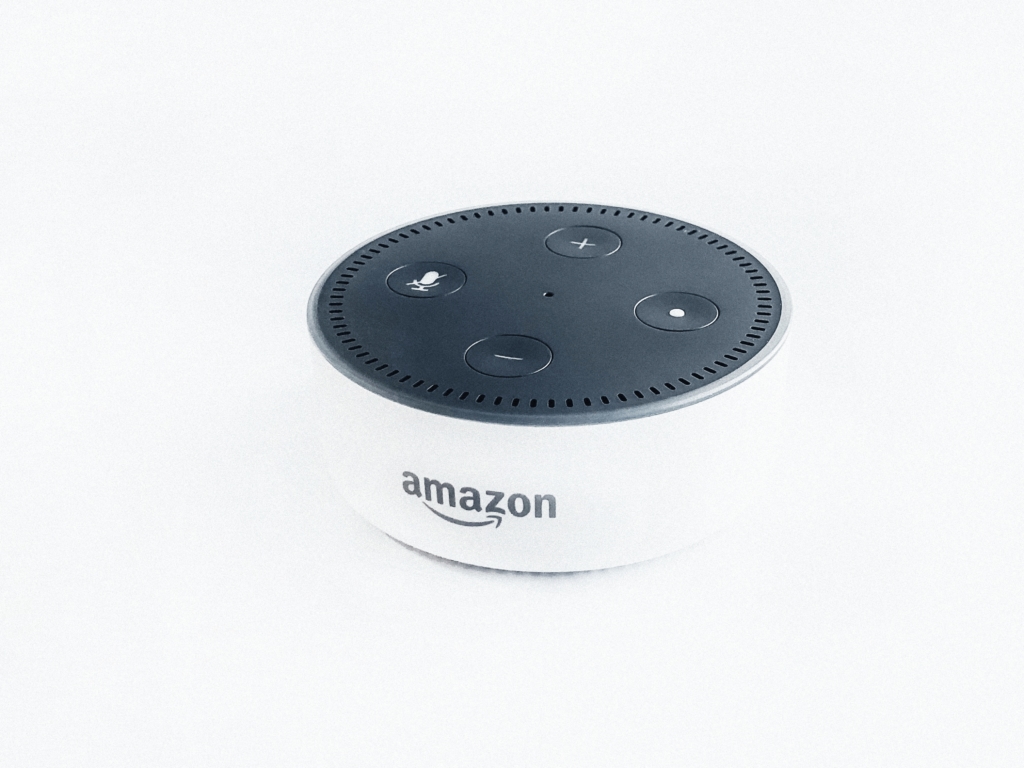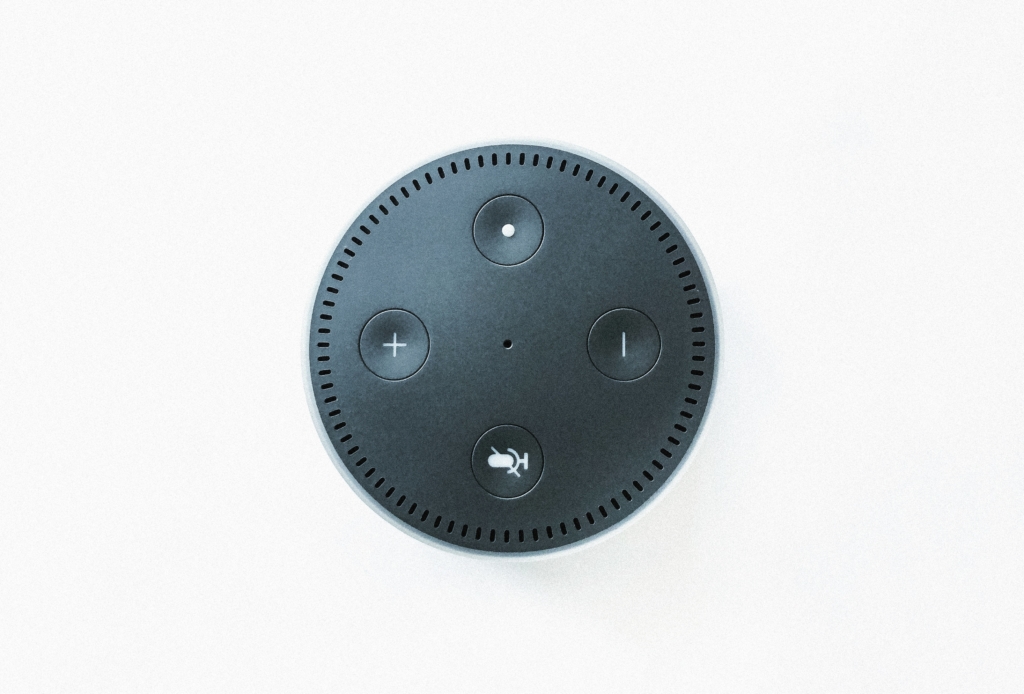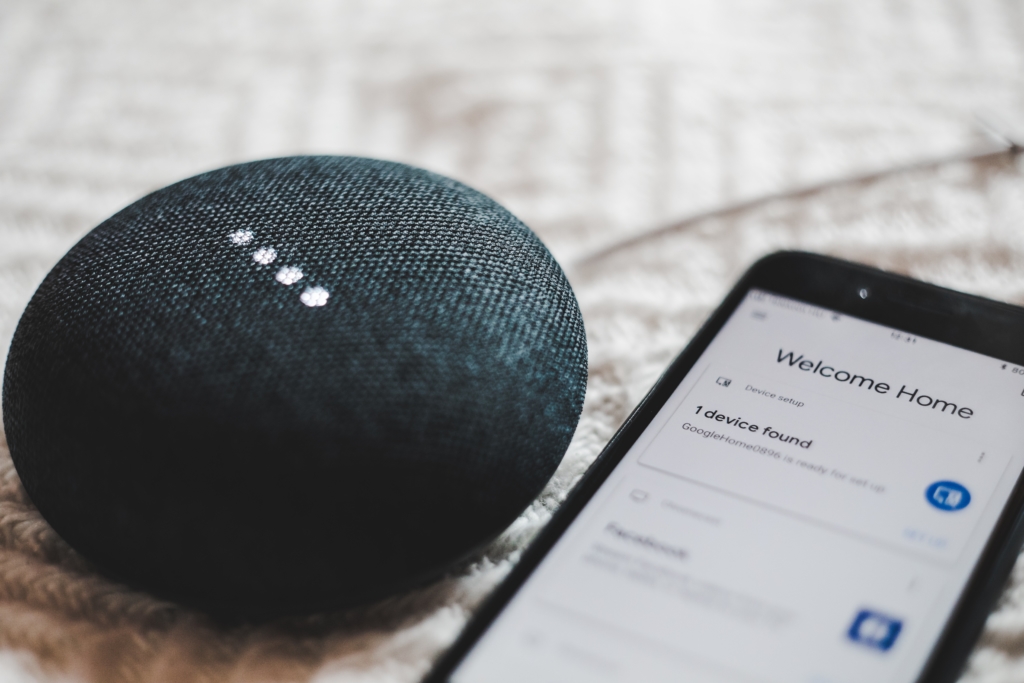
Thriving in the Age of Voice Commerce & Digital Assistants (vCommerce)
The Rise of the Smart Speaker

We’ve breached another new frontier in marketing. Thanks to the widespread adoption of IoT like Amazon’s Alexa and other smart speakers, a new channel has emerged and is rapidly picking up speed in the world of eCommerce: Voice-Commerce (vCommerce). Here’s a quick guide with all the stats and tactics marketers need to know to get a grip on the new technology, fast.
Forerunners & Followers
As more voice-enabled devices like Google Home, Echo Dots, and Apple’s recently released HomePod continue to pervade households, the rate of voice based purchases is skyrocketing. Forrester projects that by the end of 2018, 26.2 million U.S. homes will have smart speakers, spelling fortunes for online retailers.
What’s more, a report published by Juniper Research estimates that smart speakers will reach more than 55% of U.S. homes by 2022. With his residence completely integrated with Google Home, Redstage CEO Adam Morris says he’s “constantly witnessing improvements in voice capabilities from new commands to more accurate responses.” Considering the growing adoption rate and skill set of voice assistants, Morris says, “I believe voice is ready for eCommerce.”
Now that we can see the adoption curve, let’s dive into the implications from a search perspective.
The Heart of vCommerce

At the heart of the vCommerce movement lies our common frenemy, Google. Not only is Google now making all types of smart speakers to compete with Amazon, they’ve naturally gained dominance in the vCommerce search market. Remember, voice search did not exist before 2016.
To get an idea of how quickly the tech is taking over, heres some info from Kissmetrics: “Within 2016 alone, voice-based search went from zero to 10% of all search volume. Today, 20% of all searches have voice-based intent, and by 2020, ComScore estimates that half of all searches will be done by voice.”
“Today, 20% of all searches have voice-based intent, and by 2020, ComScore estimates that half of all searches will be done by voice.” –Kissmetrics
Say it again in your head… HALF of all searches… that’s real estate you can’t afford to miss out on. The fun game for the years ahead will be keyword planning for customer voice searches… but we’ll get back to that later on.
Here’s another one from Forbes: “Voice assistants are already being used to make purchases by 40% of millennials, with that number expected to exceed 50% by 2020.” So now you’re thinking, okay, great, more Adwords campaigns right? But wait! There’s more you can do to prep for this torrent of voice shopping.
Getting Your Share of Voice
Unapologetic marketing puns aside, here’s how to prep for vCommerce.

Step 1: Behavioral Analysis
Get your strategy team together and dive deep into your customer behavior segments. Which of your products are getting the most search traffic? What are your top sellers? What are the top products customers search for within your site?
Step 2: Search Out Loud
Think about what products you’ve personally searched for recently and how you found them. Brainstorm which of these products you’d order on a whim from your bedroom, your kitchen, your laundry room, or your entertainment center. Think about things you might search for while out at the store to compare prices, and things you could order from your desk at the office. More importantly, think about a product you need, like a refill on paper towels, and ask for it out loud. It’s likely that the way you ask for something aloud is different from how you search for it online. Saying “Alexa, order me more [Brand name] paper towels” is a bit different from typing “[Brand name] paper towels” in Google. Use this to your advantage.
Step 3: SEO Linguistics
Once you’ve tackled mobile-first SEO, start to rethink SEO in terms of natural language. Grab your smartphone or your favorite smart speaker and run some voice searches. What are the top results? Which of your competitors are showing up? What meta descriptions and keywords are they using? What phrases are their Google ads populating for? Think long-tail, because every customer is going to be asking for things a little differently.
If you’re new to this, “Long-tail keywords are longer and more specific keyword phrases that visitors are more likely to use when they’re closer to a point-of-purchase or when they’re using voice search. They’re a little bit counter-intuitive, at first, but they can be hugely valuable if you know how to use them.” (Wordstream) Retool your content for natural language and start ranking for voice searches as well as regular (manual-typing) searches. With this in mind, remember that voice searches are the ultimate gateway to impulse purchases. Take advantage of this, make some tweaks and test, test, test!
“‘The websites that will win…are incorporating (voice) search strategies for typers and talkers, alike,’ says Michael Peggs, Founder and Chief Content Creator of Marccx Media.”
—Inc.com
Step 4: Get Local, Get Vocal, and Get on Amazon
According to Search Engine Watch, “Mobile voice-related searches are 3X more likely to be local-based than text.” This means, it’s time to boost your local search magnet. If you’re not using Amazon as a channel to sell more products, now’s the time to start, as Alexa is programmed to suggest products from Amazon automatically. Don’t miss the chance to have your product recommended by a customer’s favortite digital assistant.
Additionally, consider reminding your customers that they can find you via voice search! This simple announcement can make a better CX for anyone who’s not yet accustomed to using voice search. More importantly, if you have Alexa Skills for your store, you’ll definitely want to tell the world. Send your customers an email telling them how they can order their next product just by saying a phrase. The’re not likely to forget it. Don’t have an Alexa Skill for your store? Read on:
Step 5: Get The Alexa Skills Kit Get the Alexa Skills Kit and start creating voice-enabled Alexa skills. According to PracticalCommerce, the kit is “a collection of self-service APIs and tools that make it easier to create voice-driven capabilities for Alexa.” Not only will this allow your customers to make purchases simpler, but more importantly, as an accelerating number of retailers invest in the trend, more customers grow accustomed to using this pervasive technology.
Final Thoughts

To recap, 2020 is shaping up to be a critical year for vCommerce. The projections scream 50% across the board. By then, roughly 50% of U.S. households will have smart speakers. 50% of all searches will have voice-based intent. More than 50% of millennials will shop via voice.
While voice as a channel begins to enter the main stream, Morris notes that eCommmerce traditionally lags behind the latest trends and technological innovations. “We [at Redstage] talked about mobile becoming the next big change in eCommerce 5 years ago. The industry collectively lagged far enough behind that now mobile traffic has overtaken desktop and today many still aren’t properly leveraging it. Mobile conversion rates are still roughly one-third of desktop rates, another sign that companies across the board haven’t realized mobile’s full potential. I have a feeling voice will follow the same pattern, though hopefully at a slightly quicker pace with what we know now. We’re witnessing and projecting massive adoption, so we’ve got a few years before the industry becomes accustomed to using voice competitively. However, voiceCommerce is an inevitability, and we should start preparing now just as we had to prepare for mobile.”
Now if you’re now thinking, “vCommerce is still on its way to maturity, so I have some time right?” Consider this tidbit from DigitalCommerce360, “A recent survey by SAP Hybris found that 38 percent of U.S. consumers would consider using digital assistants for their holiday shopping this year, a significant increase over the 17 percent who reportedly used voice devices for holiday shopping [in 2017].” If you’re looking for an edge this holiday season, this could be it.
Further Reading on Marketing in 2020
If you liked this article, you’ll also want to read, How All B2C Companies Should Be Marketing By 2020 for more disruptive insights.
Recent Comments